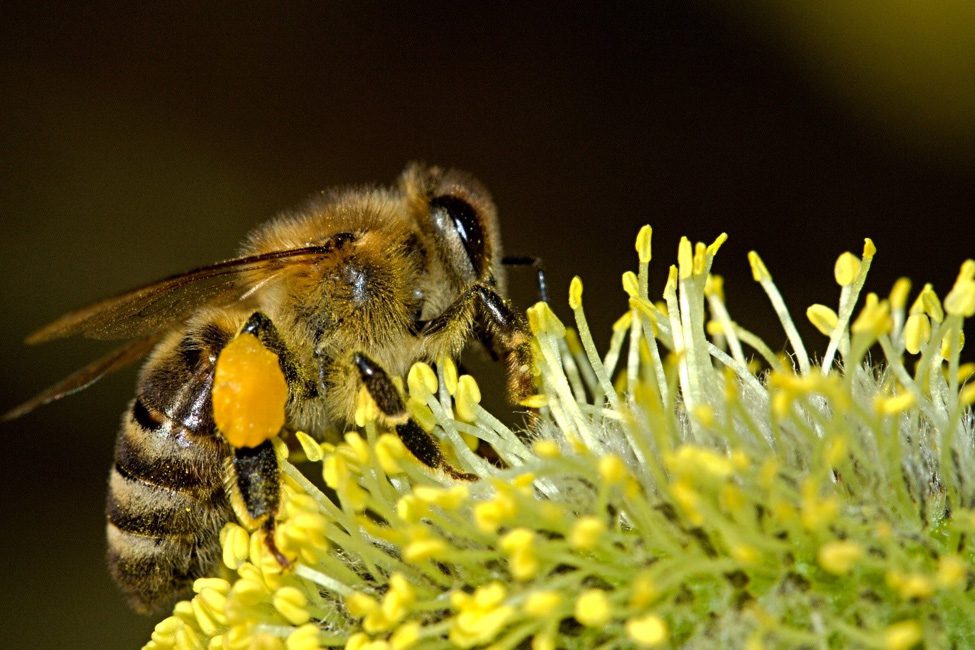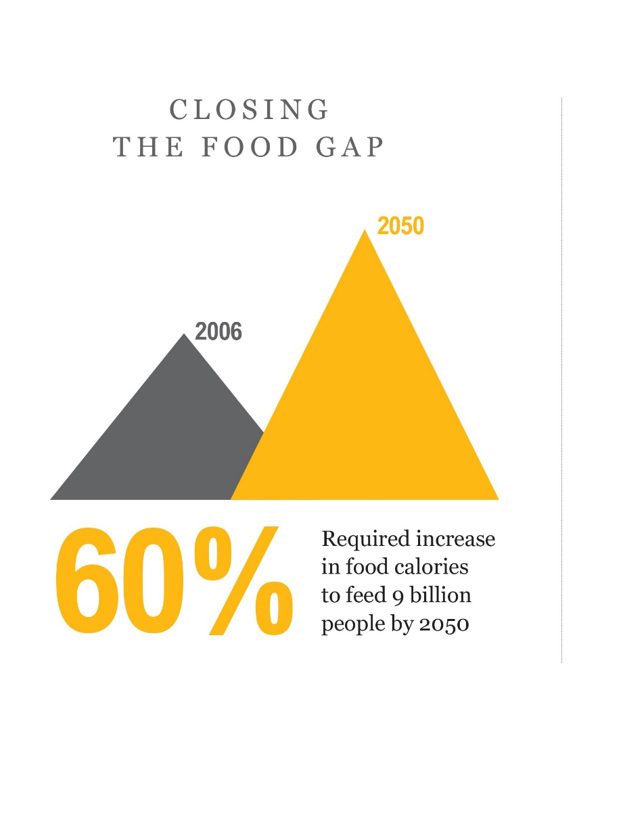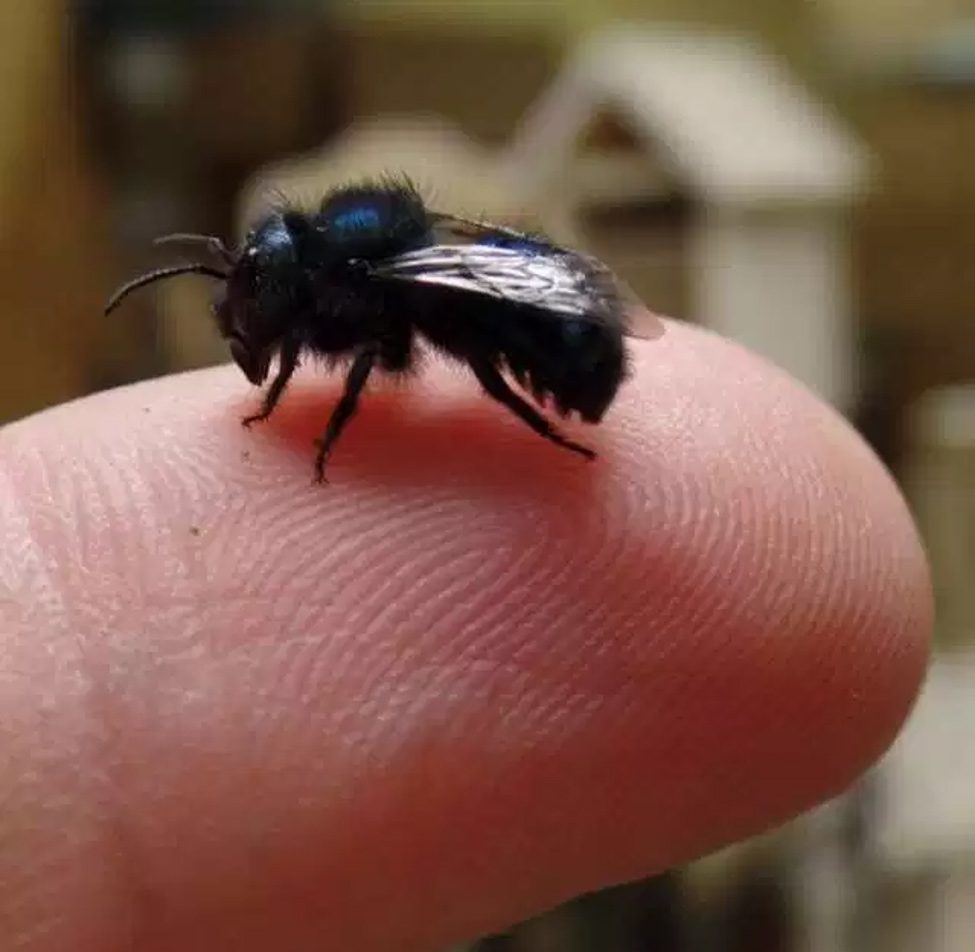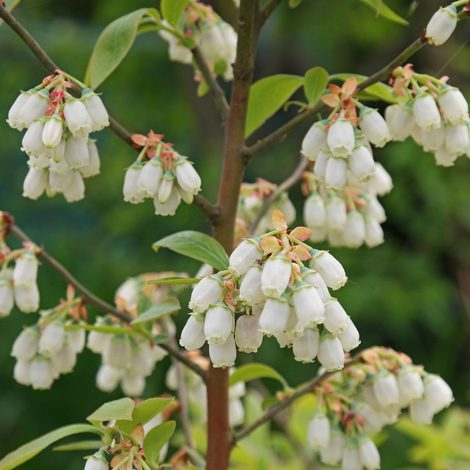Mason Bees

Blanketed in pollen
Mason bees carry dry pollen all over their hairy bodies, much of it falling off as they move from one blossom to the next; like the Charlie Brown character, who is always covered in pulverized dust, which creates a cloud everywhere he walks. Mason bees are much the same, blanketed in pollen they leave it on every flower the Mason Bee lands on.

Pollen Exchange
Fruit trees blossoms carry a negative charge. Mason Bees, as they fly, produce a positive charge in the tiny hair on the body of the Mason Bee.
When they land on the blossom “shazam” like magic the pollen they carry is exchanged for pollen from the blossom.
Mason Bees land on a blossom once and the job is done. Honeybees must visit the blossom 20 times before enough pollen is left to get the job done.
Honeybees daintily land on a blossom and collect pollen on their rear legs, using saliva to wet and attach pollen.

We need more Mason Bees
In a quarter acre of fruit trees, you’ll need 15,000 honeybees or 95 Mason Bees.
We are losing our honeybees. We lost 50% of our honeybee hives last winter. Honeybee population levels have dropped by 50 percent in the past 25 years.
But don’t worry Mason Bees are extraordinary pollinators, we just need an enormous amount of them. You can help. Set up a breeding program to raise Mason bees.
Before World War II North America had an innumerable population of Mason Bees. During the war, we developed pesticides, for mosquitoes that were a plague to our soldier in the pacific. After the war we used pesticides on our crops back home; boy did they work well, killing friend and foe alike, almost wiping out the mason bee. We must bring them back.
With our honeybees collapsing we must bring back the Mason Bees. We need them!


We need an extraordinary pollinator. We have one in the Mason Bee.
And, Mason Bees don’t sting. They do not induce anaphylactic shock.
They require much less equipment and cost less to maintain.

Workers
One last word on Pollination: Mason Bees work in light rain and in temperatures under 60 degrees. They forage earlier, longer and later in the day. Honeybees do not.
Up here in the Pacific Northwest, we have a saying, “If you don’t work in the rain you’ll starve to death.

Pollen v Nectar
Blueberries bloom early in the spring, as do fruit trees.
An acre of blueberries has 10,000,000 blossoms per acre. If your bees don’t work in the rain, or not until it’s over 60 degrees, and must visit a flower twenty times to ensure pollination; how can they get the job done?
Mason Bees are mostly after pollen, on the other hand, honeybees are mostly after nectar to make honey.
Shorter range of forage
Mason bees have a range of 300 feet in all directions. Yeah-but honeybees have a range of two miles. Mason Bees will work the blossoms where you put them, they’ll stay home.
Honeybees will fly to the flowers that provide the most nectar and that may not be yours, as is the case with blueberries. That puts them at risk of pesticide poisoning, at someone else’s field.
The mason Bees’ shorter range of forage gives the beekeeper more control, as to where pollination occurs.
Friendly
You can spend time up close and personal observing your mason bees, they are friendly and don’t sting. It’s fun.
The cute little males Mason Bees have white hair on their heads.


